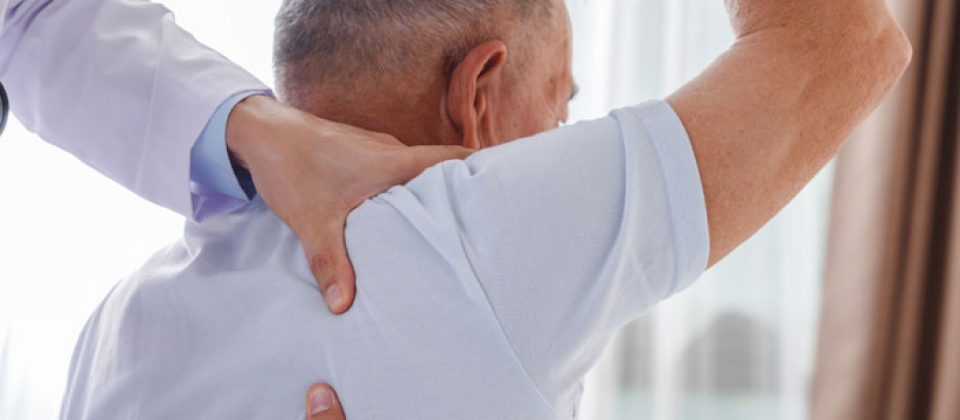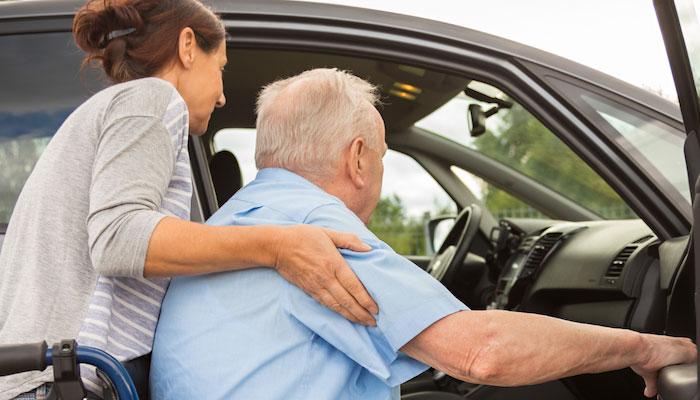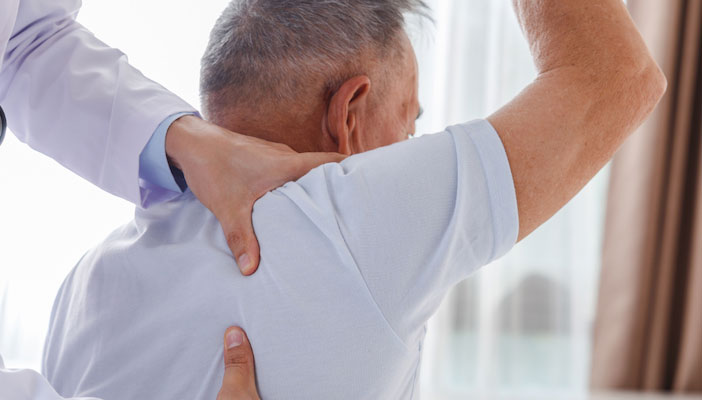
Back Safety – Don’t get hurt!
As a caregiver, you will have to help the person in your care move to a chair or be asked to pick up a heavy object. It is very easy to be injured doing this and left unable to perform your caregiving duties. Attention to the safest way to move your body—and the person in your care—will keep you from unnecessary injury. Save your back. If you feel a strain, get help; don’t do it alone. Most muscle strain injuries to both the caregiver and care receiver are preventable if you follow some simple rules.
Body Mechanics
The proper use of our bodies is called body mechanics. It involves standing and moving in ways that prevent injury, avoid fatigue, and make the best use of strength. When you learn how to move, control, and balance your own body, it’s easier to control and help or move another person.
Preventing Back and Neck Pain
To prevent injuries to yourself, get plenty of rest, good nutrition, physical fitness and maintain:
- Good body mechanics.
- A stress management program such as daily meditation.
- A stretching routine before you lift.
- A back-strengthening exercise program.
General Rules
The following hints will help you use proper body mechanics and be safe.
- Only lift as much as you can comfortably handle.
- Always let the person you are helping know what you are going to do.
- To create a base of support, stand with your feet 8”–12” apart with one foot a half step ahead of the other.
- Bend your knees slightly.
- Keep your spine in a neutral (normal arched, not stiff) position while lifting.
- USE YOUR LEGS instead of your back to do most of the work—leg muscles are stronger than back muscles.
- If you can adjust the bed, keep the top at about waist level. If it is low or you are tall, put one foot on a footstool to relieve pressure on your lower back.

The Golden Rule…
First, consider the task at hand. Think about what you are capable of, what assistance you might need, and to what degree the one in your care can assist you. Then, eliminate hazards such as clutter, throw rugs or excess furniture.
When planning on the space you need to move, pivot, or transfer, allow for more space than you think you need.
Remember these tips:
- Let the person you are helping do as much as he can do safely.
- Never allow the person you are helping to put his arms around your neck.
- Have the person PUSH off rails, chair arms, etc. (No pulling)
- Avoid sudden jerking movements; move slowly and communicate what you are doing and need the person to do. Remember, if the person in your care does not move often, he may become lightheaded with a change in position—move slowly!
- Have all equipment you need ready and in working order, such as a transfer belt, chair, wheelchair, commode, or Hoyer lift. If transferring to or from a bed, wheelchair or commode with locking brakes, make sure they are locked.
- If, during a transfer, you start to “lose” the person, do not try to hold him up. Doing so will probably result in injury. Instead, lower him slowly to the floor and call for assistance.
Daily Back Strengthening Exercises
Hug Your Knees—Lie on your back with knees bent and soles on the floor. Use your arms to hug one knee at a time to your chest. Ten times each knee.
-
Flatten Your Back—Lie on your back with knees bent and soles on the floor. Take deep breaths as you tighten your abdominal muscles and press the small of your back into the floor. Hold to a count of 15 as you continue to breathe deeply.
-
Chest Lift—Lie on your stomach in a relaxed position. Put your hands palms down at chest level and raise your head and chest from the floor. Breathe and hold this position for a count of 25. Gradually increase the time you are able to remain in this position.
Back-strengthening exercises will take time to have an effect, but continue them, even after your back feels stronger. And no matter how strong your back feels, always use proper body mechanics!
Remember to check with your doctor before starting an exercise program.

Take Care of Yourself— Good Posture
If your body is not properly aligned, muscles, joints, and ligaments are stressed. This can lead to pain in the back, hips, and knees.
- Neutral spine, without slumping forward at the shoulders or waist.
- Knees slightly bent, never locked.
- Abdominal muscles tight; gently suck in the stomach.
- Head centered over the body.
- Weight evenly distributed between the feet, not over one hip.
See a physical therapist to teach proper standing, sitting, walking and lifting techniques to spare the joints from extra wear and tear.
Obesity is a risk factor for developing back pain and arthritis because it speeds the destruction of joint-cushioning cartilage. Losing just 10 pounds can cut your risk in half.
Source: Harvardhealth
Memory Care – Resistance
Any time the person with Alzheimer’s resists you, consider whether the person understands what you want him to do and whether he feels safe. Fear and confusion are often the cause of resistance. During transfers, people may feel more vulnerable and may resist out of fear or not knowing where they are going.
 Safety Tips- Back Pain and Activity
Safety Tips- Back Pain and Activity
A common myth about back pain is that you need to rest and avoid activity for a long time. In fact, doctors do not recommend bed rest. If you have no sign of a serious cause for your back pain (such as loss of bowel or bladder control, weakness, weight loss, or fever), stay as active as possible.
Here are tips for how to handle back pain and activity:
- Stop normal physical activity for only the first few days. This helps calm your symptoms and reduce swelling (inflammation) in the area of the pain.
- Apply heat or ice to the painful area. Use ice for the first 48 to 72 hours, then use heat.
- Take over-the-counter pain relievers.
- Sleep in a curled-up, fetal position with a pillow between your legs. If you usually sleep on your back, place a pillow or rolled towel under your knees to relieve pressure.
- Do not do activities that involve heavy lifting or twisting of your back for the first 6 weeks after the pain begins.
Source: National Institutes of Health MedlinePlus